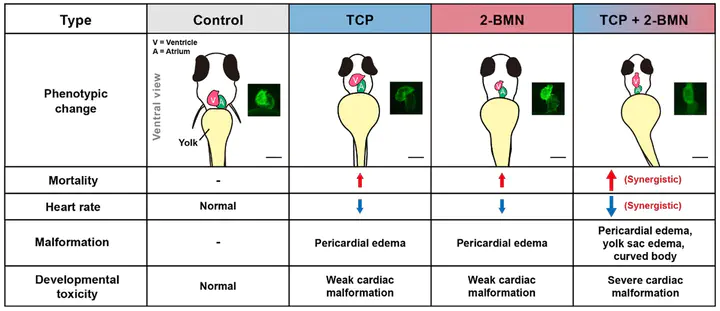Combined toxicity of 3,5,6-trichloro-2-pyridinol and 2-(bromomethyl) naphthalene in the early stages of zebrafish (Danio rerio) embryos: Abnormal heart development at lower concentrations via differential expression of heart forming-related genes

Abstract
Combined toxicity can occur in the environment according to the combination of single substances, and the combination works additively or in a synergistic or antagonistic mode. In our study, 3,5,6-trichloro-2-pyridinol (TCP) and 2-(bromomethyl)naphthalene (2-BMN) were used to measure combined toxicity in zebrafish (Danio rerio) embryos. As the lethal concentration (LC) values were obtained through single toxicity, the lethal effects at all combinational concentrations were considered synergistic by the Independent Action model. At 96 hpf, the combined toxicity of TCP LC10 + 2-BMN LC10, the lowest combinational concentration, resulted in high mortality, strong inhibition of hatching, and various morphological changes in zebrafish embryos. Combined treatment resulted in the downregulation of cyp1a, leading to reduced detoxification of the treated chemicals in embryos. These combinations may enhance endocrine-disrupting properties via upregulation of vtg1 in embryos, and inflammatory responses and endoplasmic reticulum stress were found to upregulate il-β, atf4, and atf6. These combinations might induce severe abnormal cardiac development in embryos via downregulation of myl7, cacna1c, edn1, and vmhc expression, and upregulation of the nppa gene. Therefore, the combined toxicity of these two chemicals was observed in zebrafish embryos, which proves that similar substances can exhibit stronger combined toxicity than single toxicity.